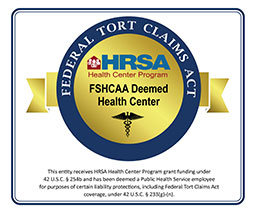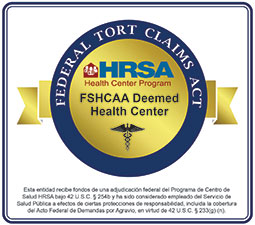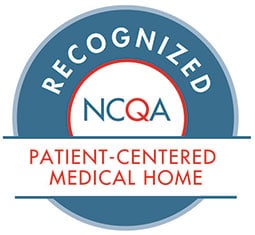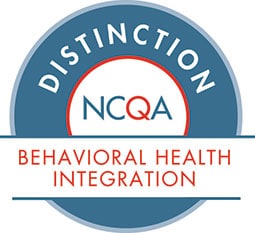Allergy and Asthma Awareness Month
 By: Whitney Venegoni, APRN, FNP-C, Family Nurse Practitioner
By: Whitney Venegoni, APRN, FNP-C, Family Nurse Practitioner
May is National Asthma and Allergy Awareness Month.
For many, May will be when symptoms are the most severe, so it is a great time to shed light on both. Allergies and asthma have a wide range of symptoms and severity, and they are experienced differently by every patient. They cannot be cured, but they can be controlled by avoiding triggers and using appropriate medications. Over 100 million Americans experience allergies each year, affecting as many as 30 percent of adults and 40 percent of children. Over 25 million Americans have asthma. In Kansas, a higher percentage of our population suffers from asthma compared to the rest of the US.
Allergy symptoms can be intermittent with symptoms only half of the time or for less than four weeks total. Other patients will experience symptoms more frequently, sometimes impairing sleep or daily activities. In the most severe cases symptoms are life threatening. No matter the frequency allergic reactions happen when our immune systems have an abnormal response to something we are exposed to.
Many common triggers include pollen, dust, animal dander, mold, food, insect stings and certain medications. For some symptoms are a runny nose and sneezing during springtime. We use allergy medications to help decrease the response our body has to these triggers and alleviate symptoms. For others exposure to certain allergens will cause a life-threatening reaction. Symptoms for these patients can include flushed skin, an itchy feeling in the mouth, difficulty breathing or speaking, feeling dizzy or lightheaded, and vomiting or diarrhea. This requires an injectable, life-saving medication as soon as they realize they’ve been exposed along with emergency evaluation.
Allergies and asthma are related, and some patients suffer from both.
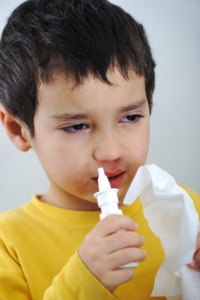 Asthma is more likely in people who have allergies. Family history of asthma, low birth weight, prematurity, exposure to tobacco smoke and pollutants, respiratory infections, and being overweight increase the risk of developing asthma. Much like allergies, asthma symptoms also tend to start after a trigger. These triggers can also include pollen, dust, and mold but expand into other things like tobacco smoke, perfumes, and other irritants. Some patients can experience symptoms when they begin to exercise. The trigger causes inflammation and irritation in the lungs, making it difficult to breathe. This is called and “asthma attack.” Patients can feel short of breath and start to cough or wheeze.
Asthma is more likely in people who have allergies. Family history of asthma, low birth weight, prematurity, exposure to tobacco smoke and pollutants, respiratory infections, and being overweight increase the risk of developing asthma. Much like allergies, asthma symptoms also tend to start after a trigger. These triggers can also include pollen, dust, and mold but expand into other things like tobacco smoke, perfumes, and other irritants. Some patients can experience symptoms when they begin to exercise. The trigger causes inflammation and irritation in the lungs, making it difficult to breathe. This is called and “asthma attack.” Patients can feel short of breath and start to cough or wheeze.
Many people describe the feeling as a tightness in the chest, restriction, or weight on their chest. These symptoms can sometimes resolve if the patient can get away from the trigger, but more often it requires the use of medications. Inhalers are most often used to treat asthma and can be used to either help prevent symptoms or to manage them once they begin. Similar to allergies, symptoms can be mild and intermittent, persistent, or life threatening.
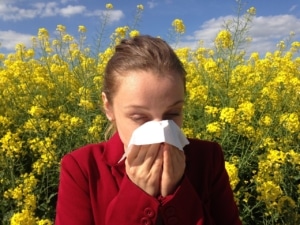 Allergies and asthma can both be managed with the help of your primary care provider. It is important to focus on awareness of these diagnoses so all patients experiencing symptoms know that help is available. In America, complications and death associated with asthma are higher in patients experiencing poverty and with less access to education and health care. For some, there is also stigma associated with inhaler use and seeking treatment.
Allergies and asthma can both be managed with the help of your primary care provider. It is important to focus on awareness of these diagnoses so all patients experiencing symptoms know that help is available. In America, complications and death associated with asthma are higher in patients experiencing poverty and with less access to education and health care. For some, there is also stigma associated with inhaler use and seeking treatment.
For patients suffering from symptoms, treatment is so important. If you think you might be suffering from allergies or asthma, contact your healthcare provider to discuss. You can make an appointment at Health Partnership Clinic by calling 913-648-2266.
For additional information, visit Allergy and Asthma Federation of America at aafa.org.

